California Naturalist Outing
Placerita Canyon State Park
12:20 a.m.-3:30 p.m.
- Route: From the parking lot near the nature center, across the creek to the start of trail.
- Weather: Cool and overcast entire time. 65°F
This last week I had the opportunity to observe Placerita Canyon in Newhall, California. It’s a relatively small park/open space full of native California plants and animals and a thriving ecosystem not overtaken by invasive mustard and thistle.
Located north of the San Fernando Valley, Placerita Canyon has a rich history as a potentially viable space for oil and agriculture but is unable to accomplish either. With some wide-open spaces deep, natural “white” oil seeps convinced early settlers that there was an opportunity and promise to seep from under the ground. But, like all things that seem too good to be true, the oil was not viable and only supplied the homestead.
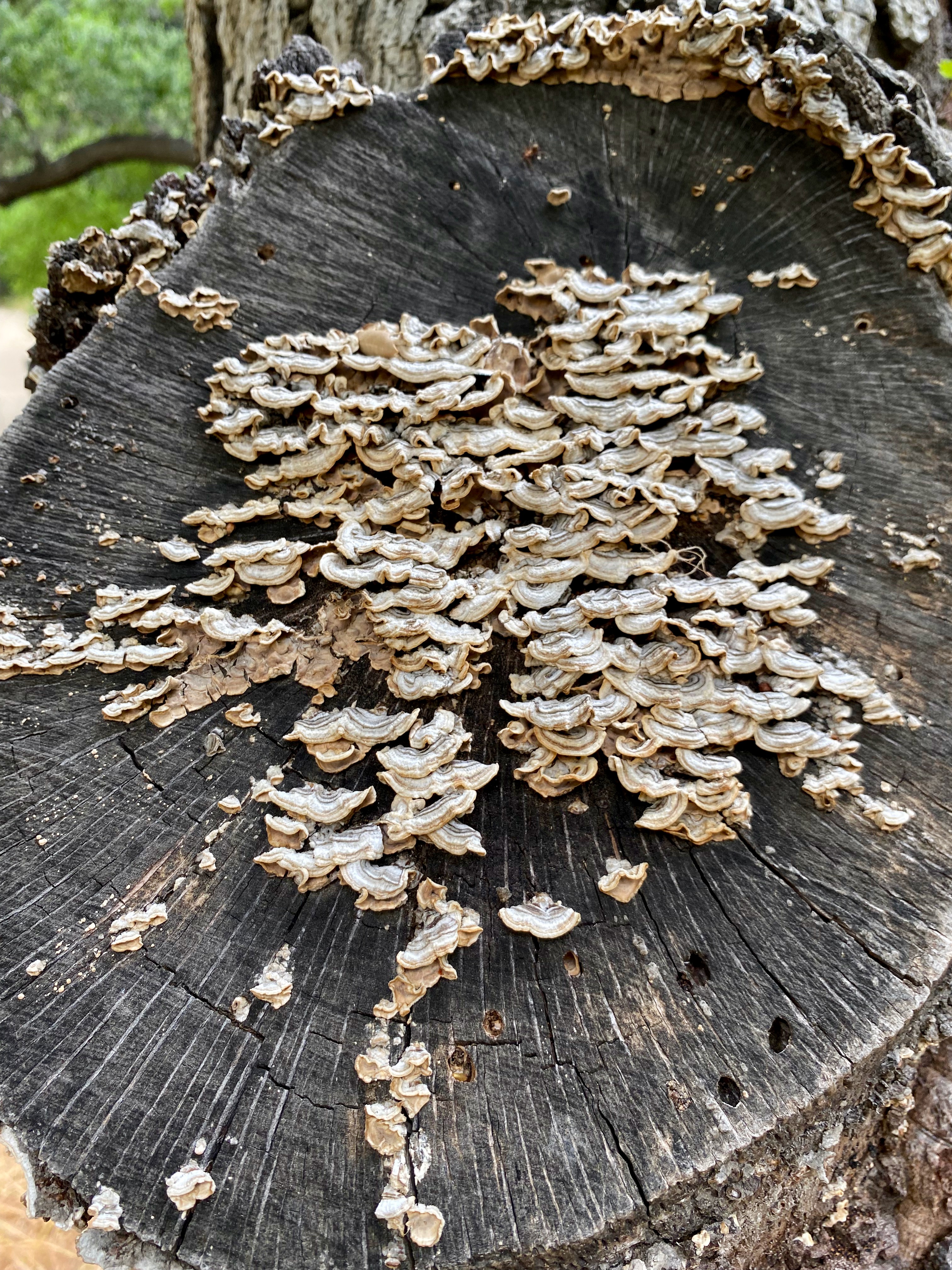
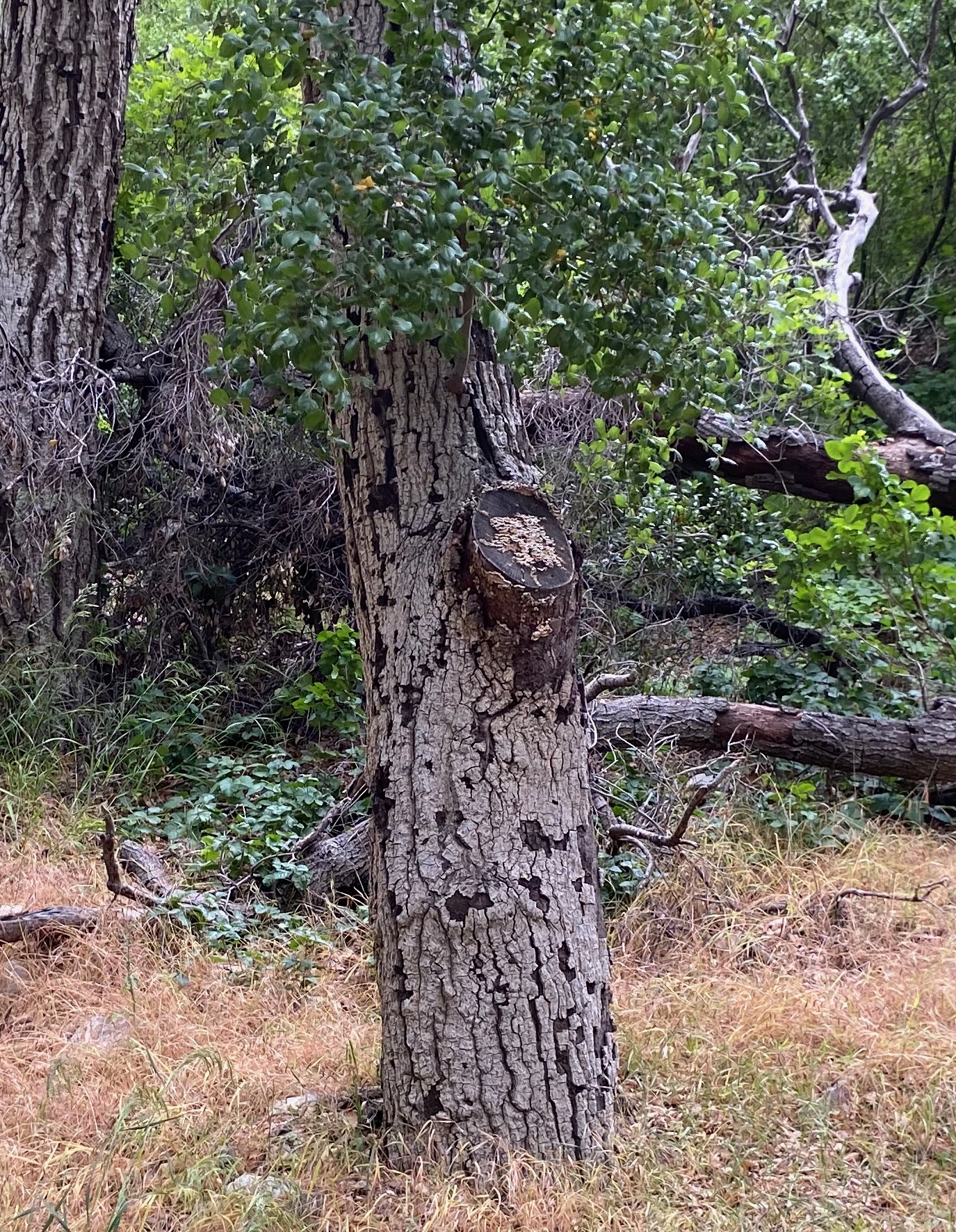
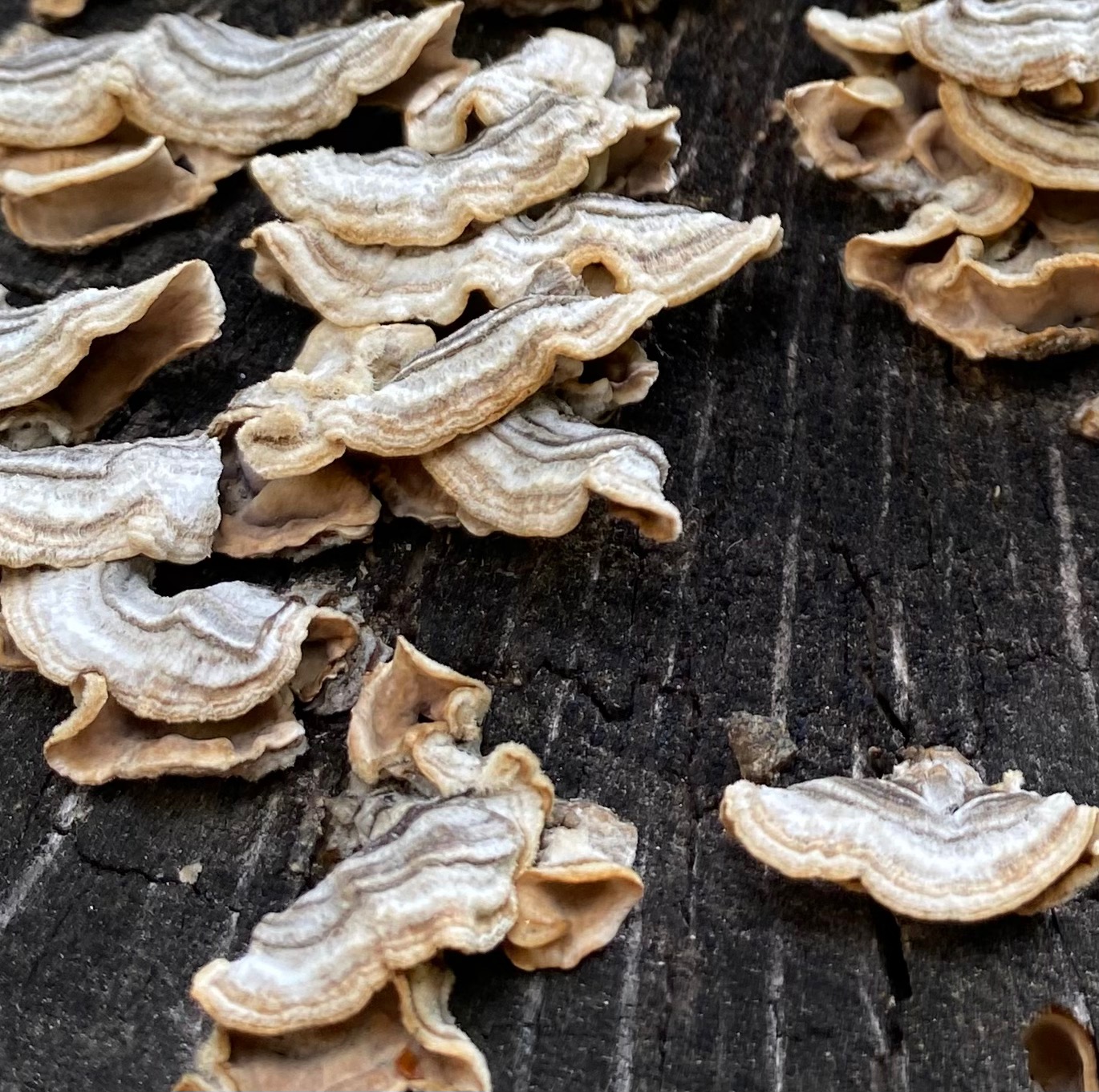
On this day, the Placerita Canyon Open Space was full of nature enthusiasts and hikers around the nature center. On the trail, I could count the number of group hikers on one hand, with no mountain bikes on the trail. I can’t say if this was normal for a weekday for the space, but by comparison with similar spaces like the Marvin Braude and the Upper Las Virgenes Canyon, the Placerita Canyon trail was empty and very easy to navigate.



Some of that emptiness might be because of the trail’s proximity to water and the creek crossings needed to make it to the end of the Placerita Canyon trail. I was surprised to navigate almost a half dozen creek crossings following the path of the trail. In years past, my experience in Placerita Canyon was of a dry creek bed and little to no vegetation along the way. This time, Placerita was flush with a full growth of riparian plants that included: sycamores, mule fat, fuchsia, and black sage. It was also full of poison oak, which was good to see, but hard to navigate in some spots. The canyon was also home to many coast live and valley oaks. It really had the appearance of a healthy and thriving riparian plant community.
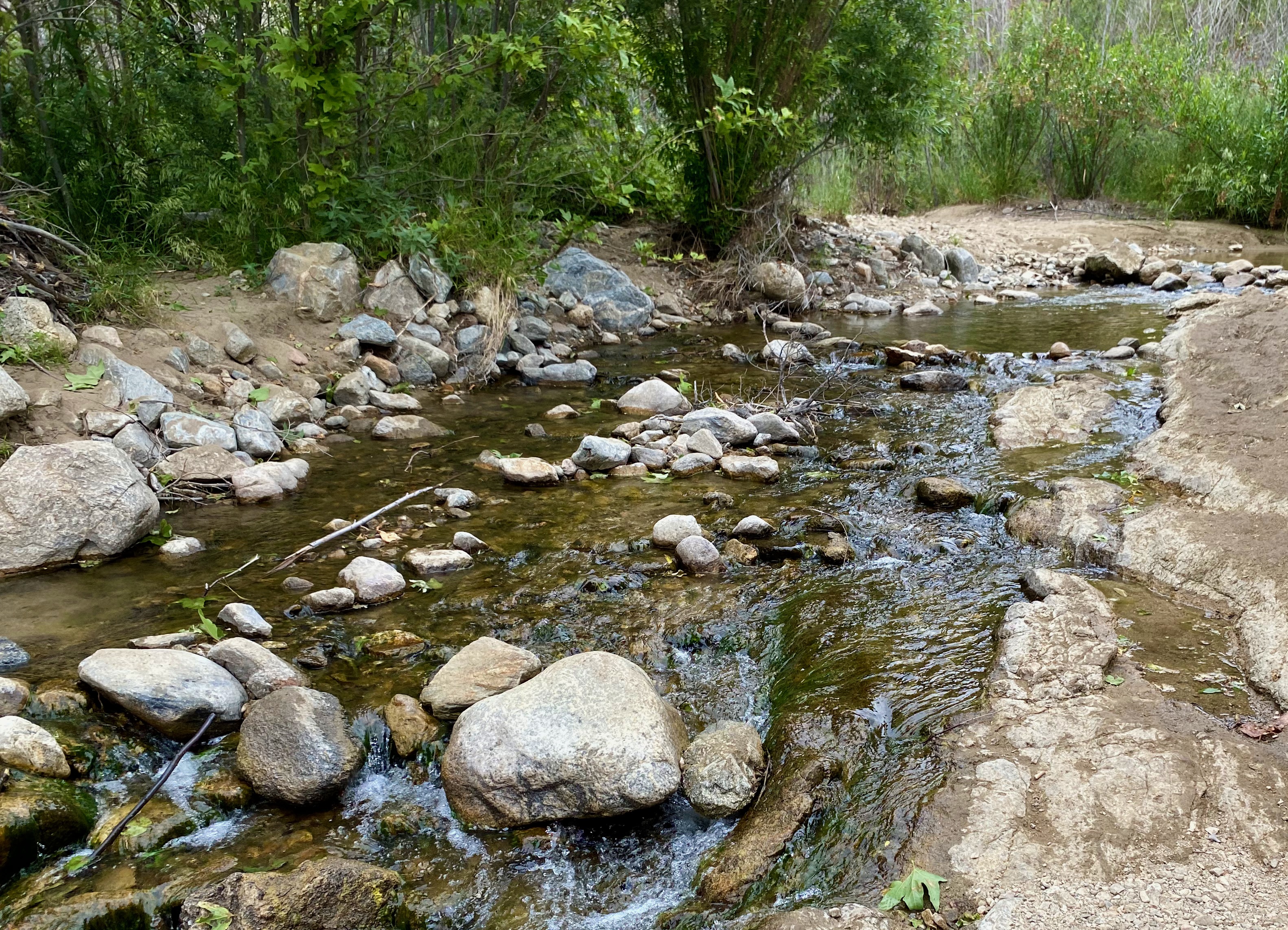
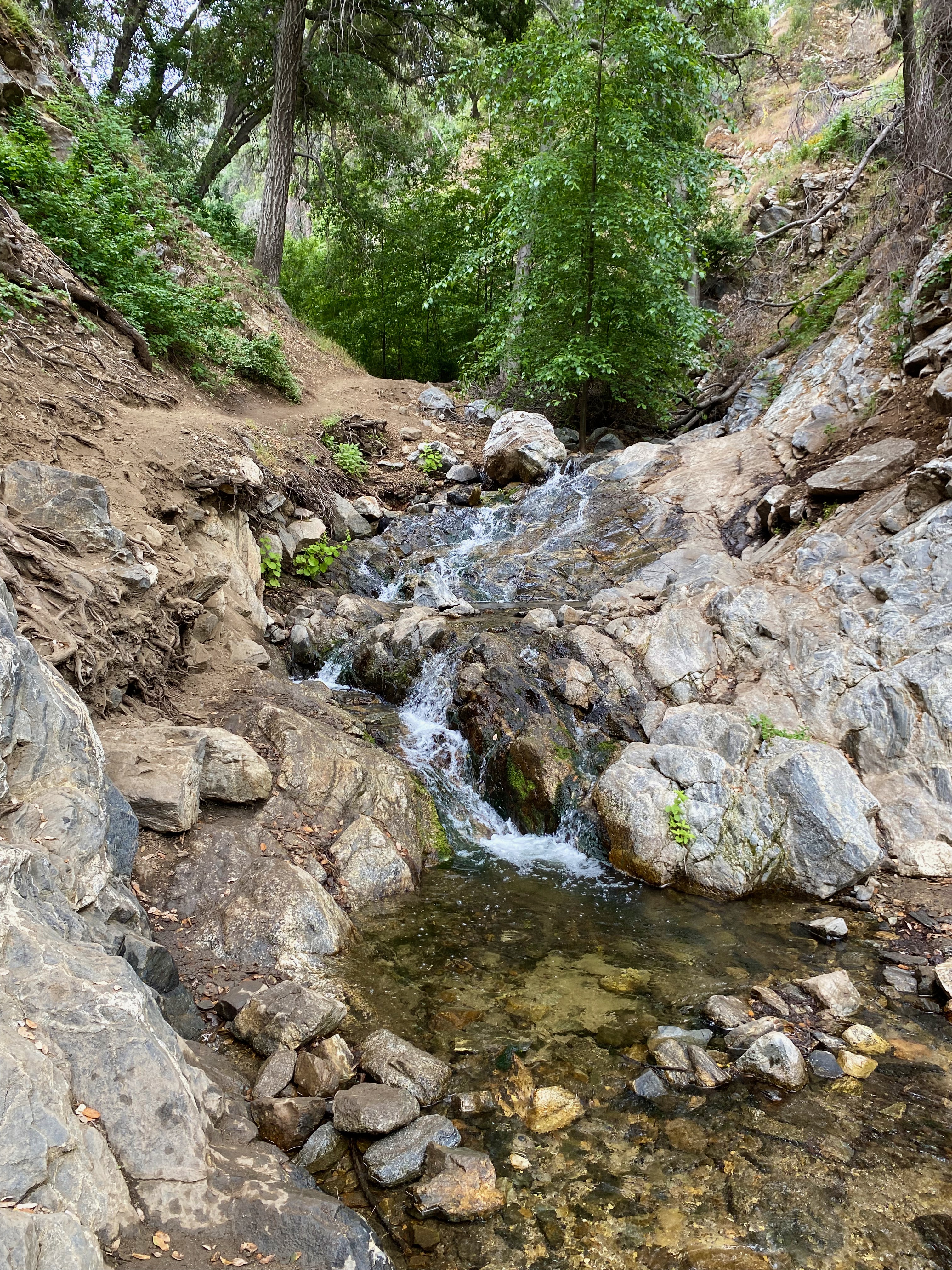
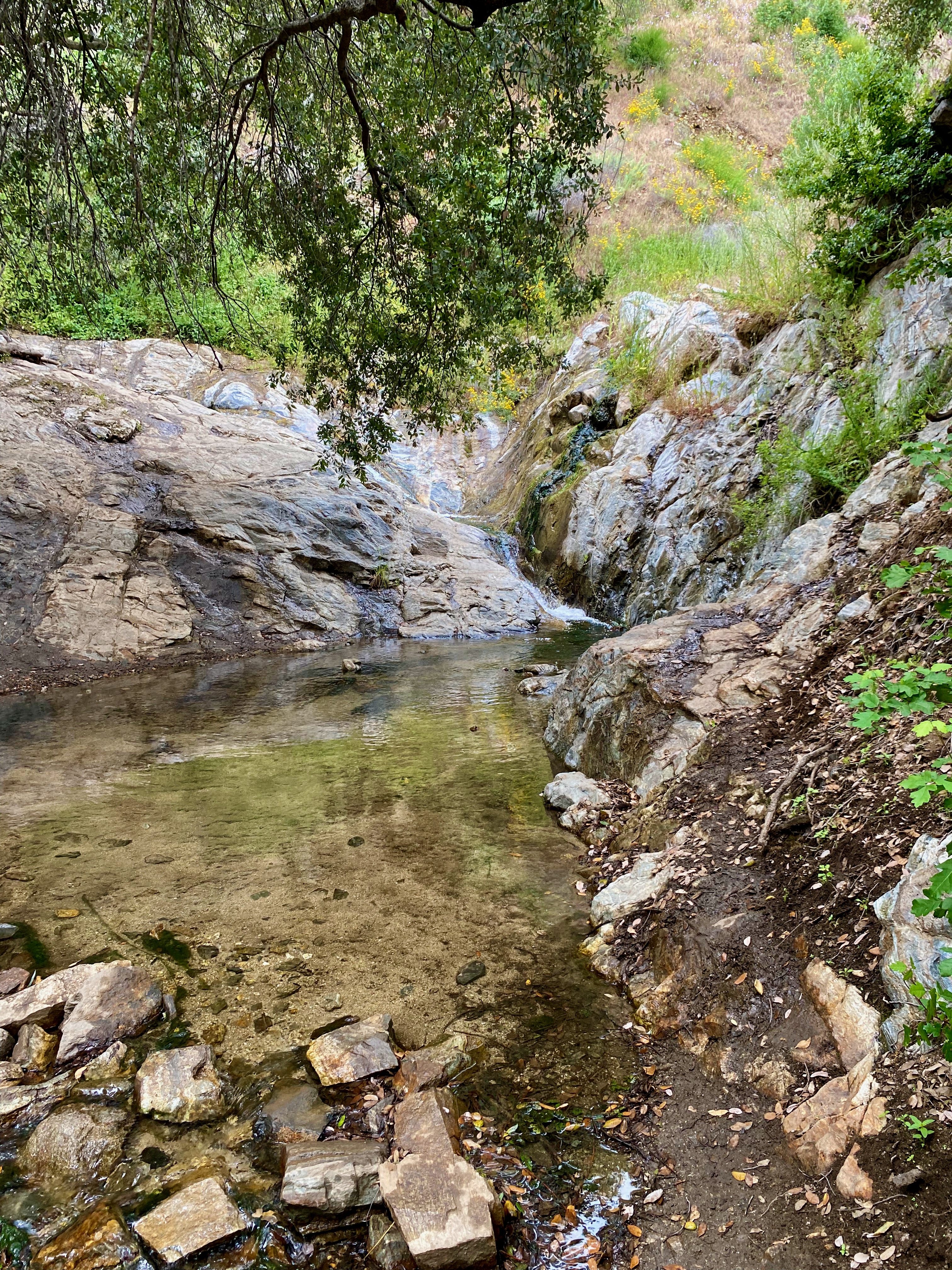
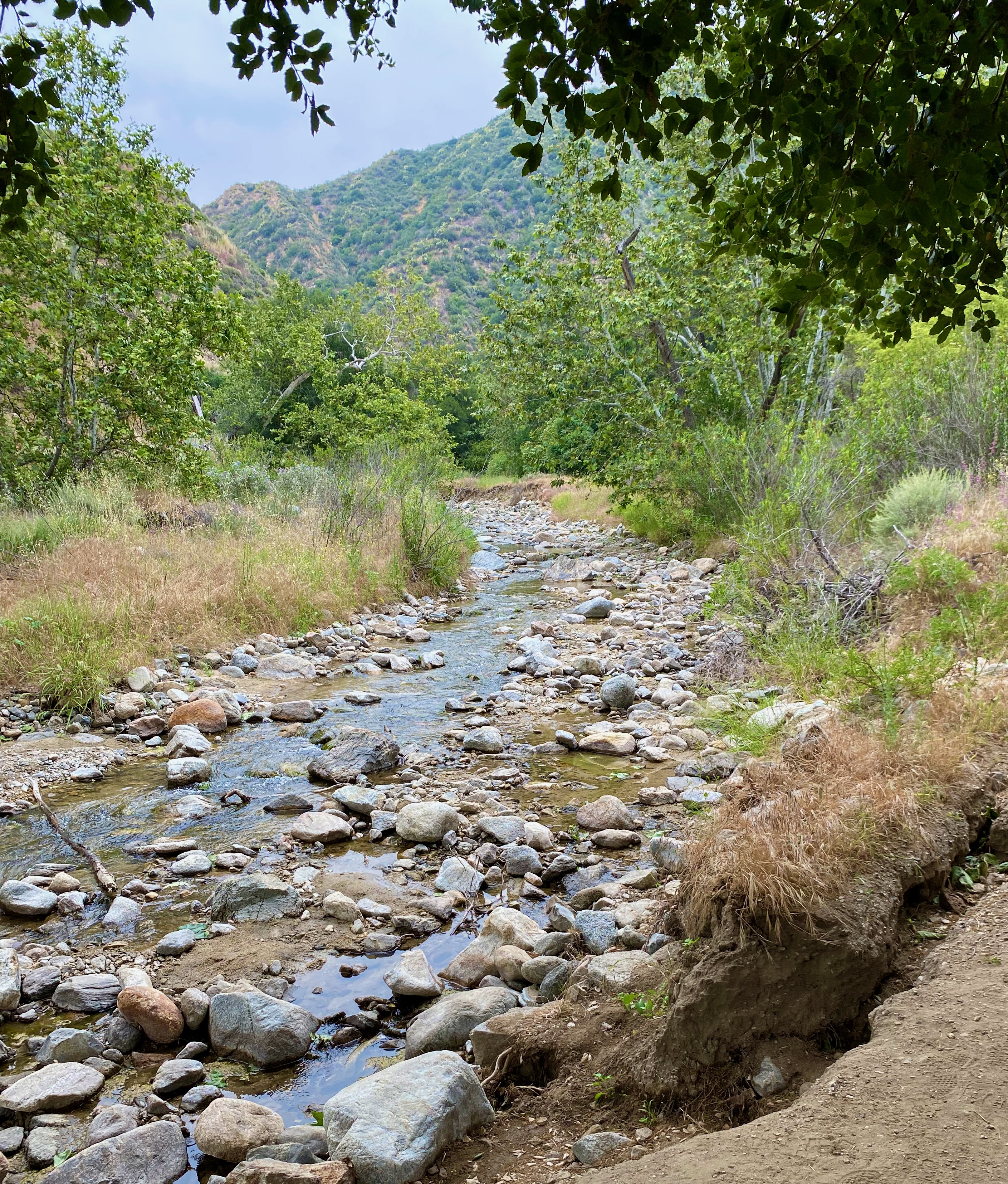
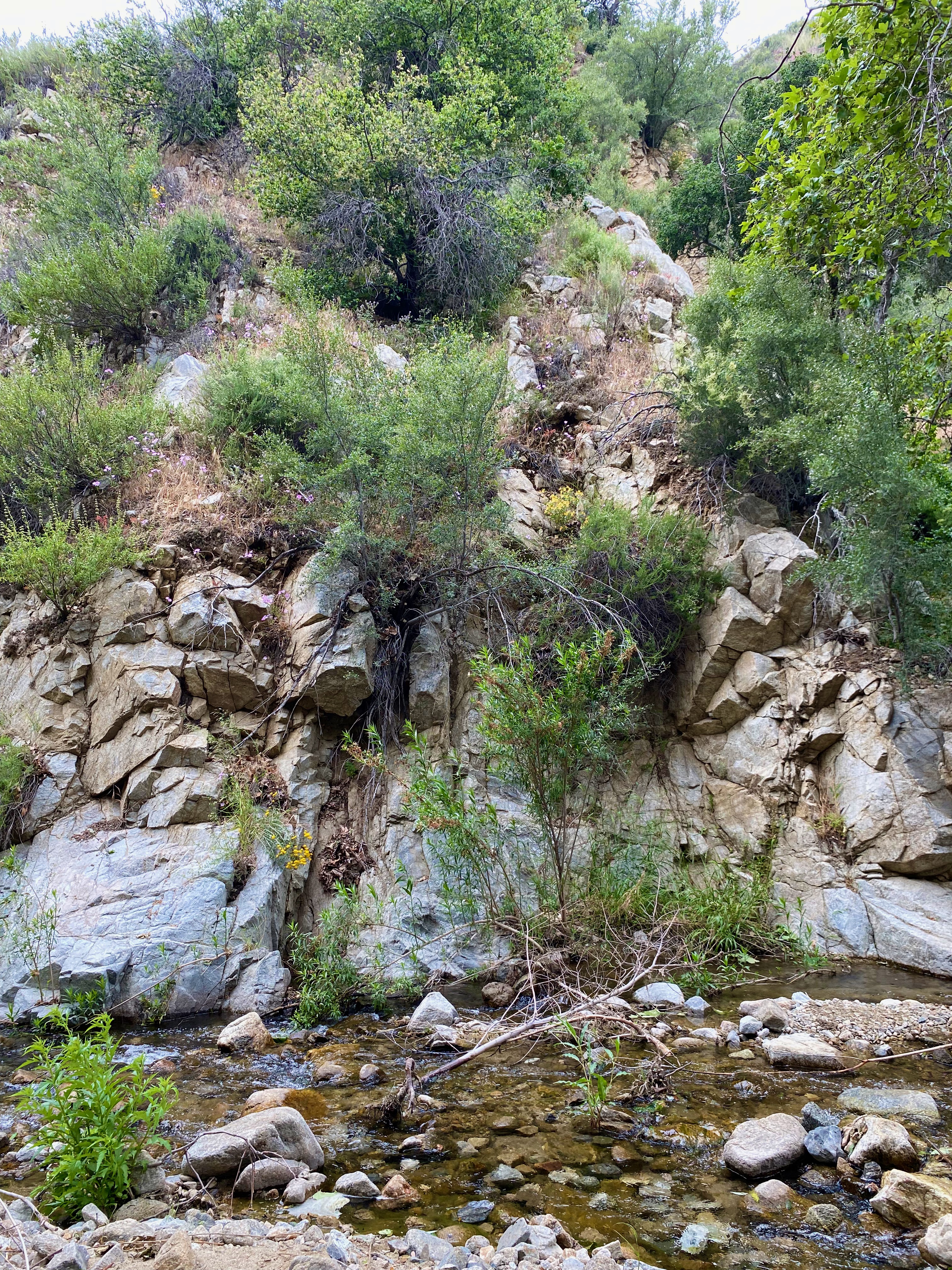
Running Creeks and Flowing Water
Also in great abundance was water. From the creek flowing down Placerita Canyon to seep water coming from under the rock faces, it was evident just how abundantly the rains had saturated the area. Along the canyon wall, you could see moisture seeping into the open creek bed. As a bonus, lanceleaf liveforever dudleya adorned the wall sending spikes of flowers into the space above the trail like fireworks with red and orange flowers. I was surprised just how many lanceleaf’s there were in Placerita, but they seemed to be a thriving colony all along the trail.

Another plant that seemed to have a dominant foothold in Placerita was the yerba santa. In spots, the tough-looking bush seemed a mono-crop of thick green leaves. Even more spectacular was that every plant was in full bloom and covered in light blue-purplish flowers. This is one of my favorite plants in the hills over SoCal. My first few encounters with it were in the Upper Arroyo Seco where it was growing sparsely along the hillside. Here, in the canyon at Placerita, it was everywhere. Almost to the point that I wondered what species or plants it was pushing out of the ecosystem. In only a few locations did I see lemonade berry, toyon, or ceanothus. But the Yerba Santa was everywhere. It really had found its happy place there.
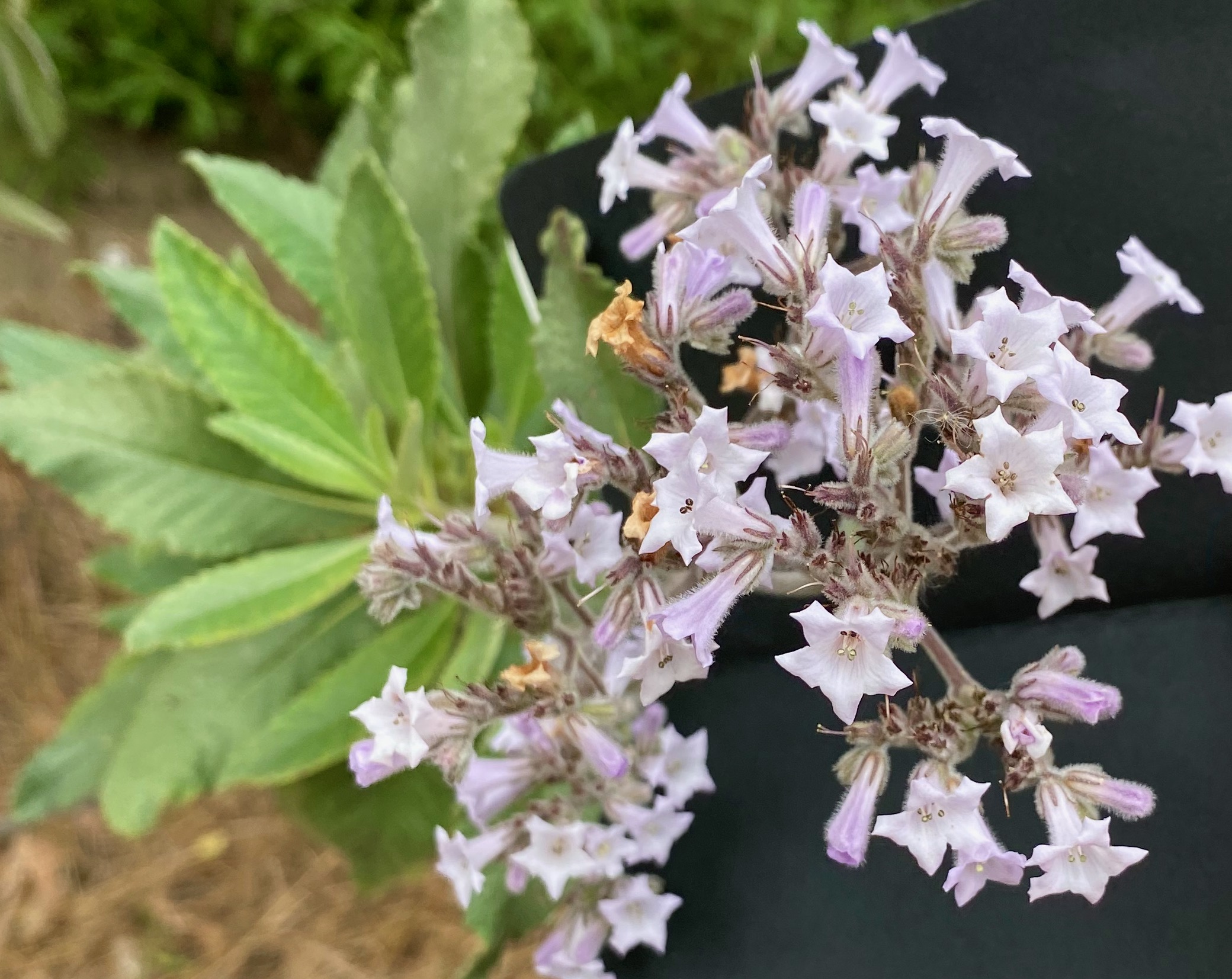
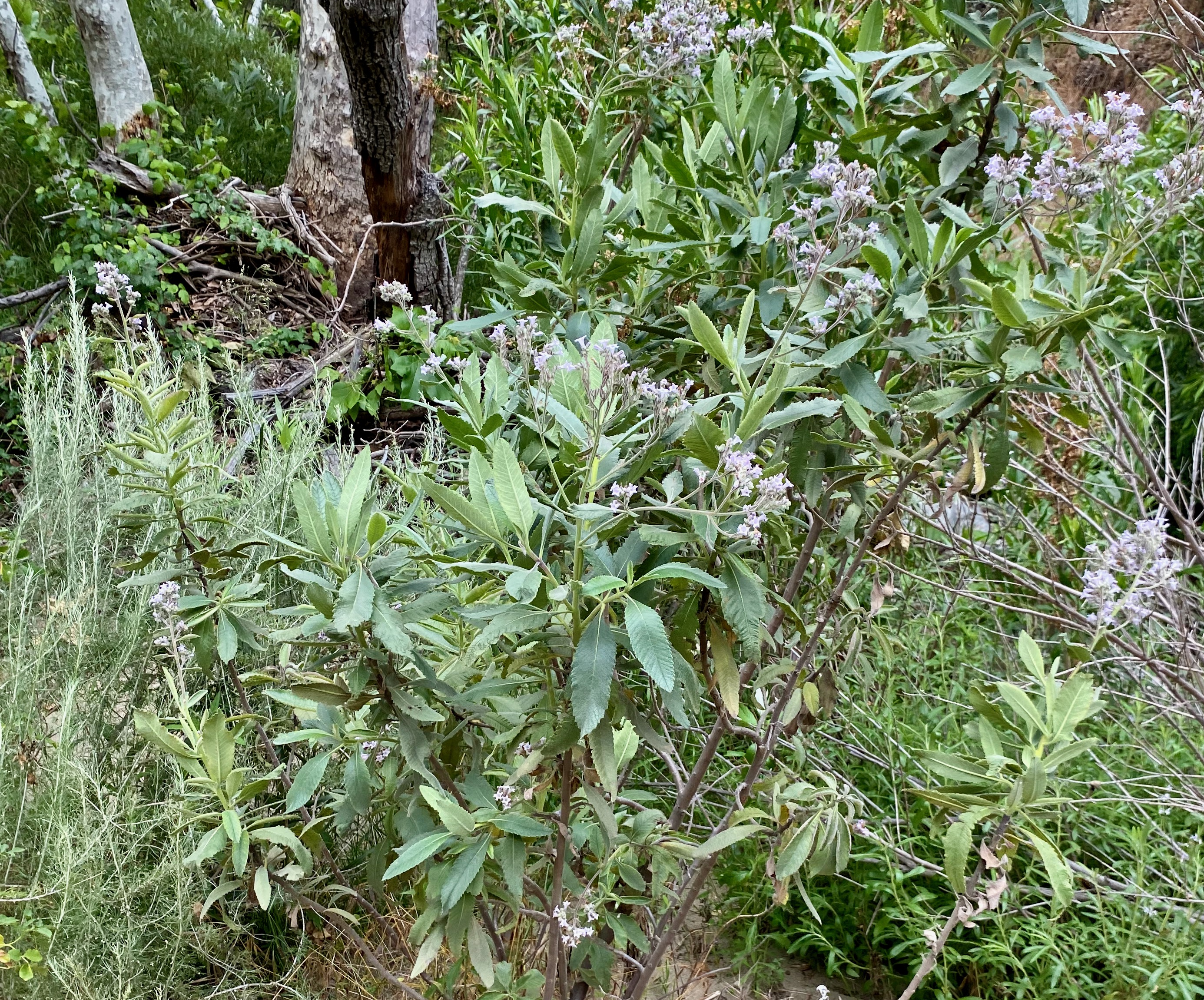
Invasive Impacts
Another plant I didn’t see a lot of was mustard. There was some along the trail edges. In the wider open spaces, not as much as you would imagine. I wonder how much the lack of mustard correlates to the Placerita Canyon space being a healthy native ecosystem. I read recently about how productive native plant communities don’t allow invasive mustard because the introduced plant can’t get a toehold into the healthy ecosystem. It’s when that healthy ecosystem is drought or fire-stressed that mustards and invasive grasses can get in and spread.
Further back in the canyon, I did see a lot of grasses and oats that had all set and dropped seed. Mustard seemed to have a little more of a presence, but not overwhelming as with other locations geographically adjacent to Placerita Canyon.
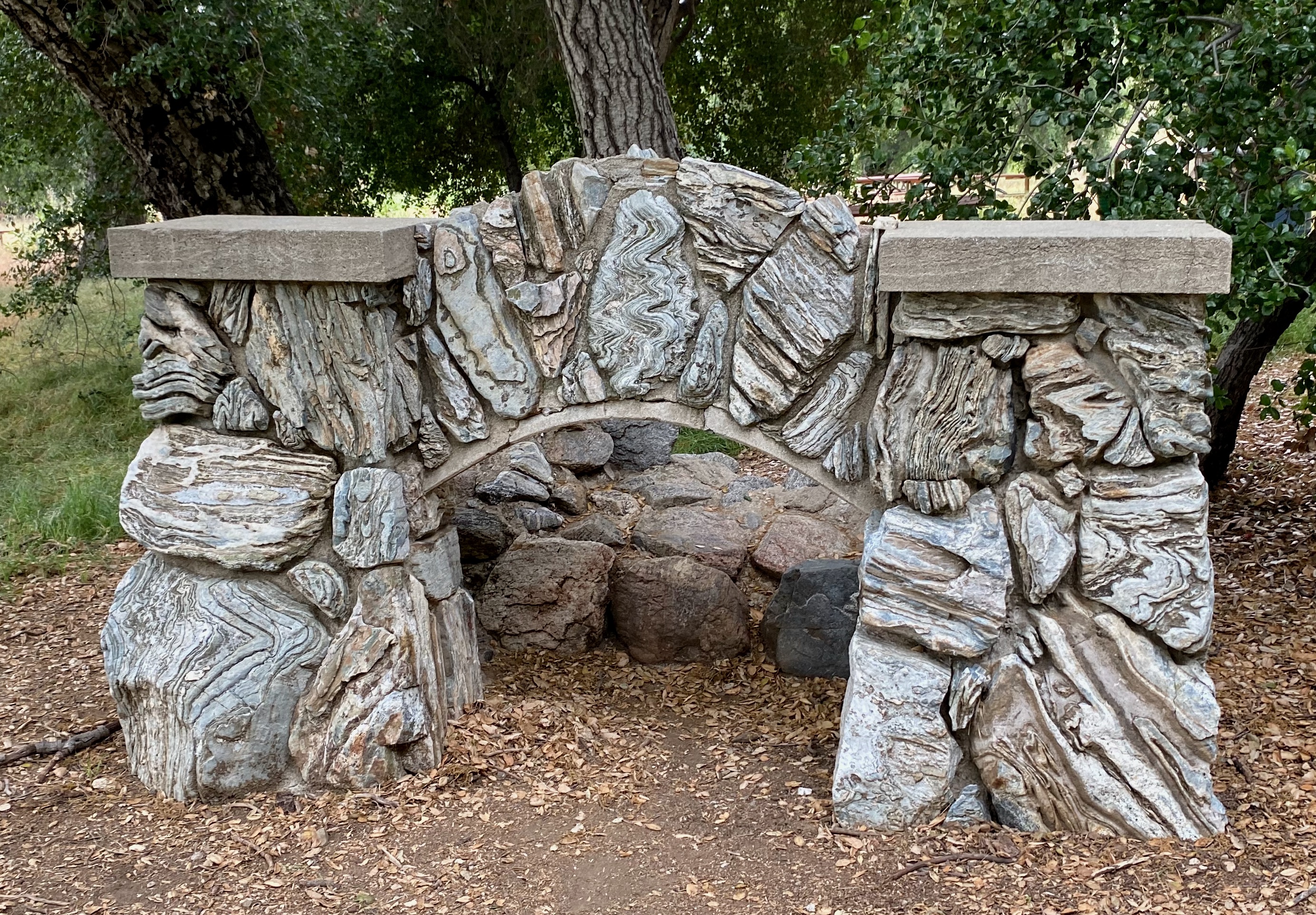
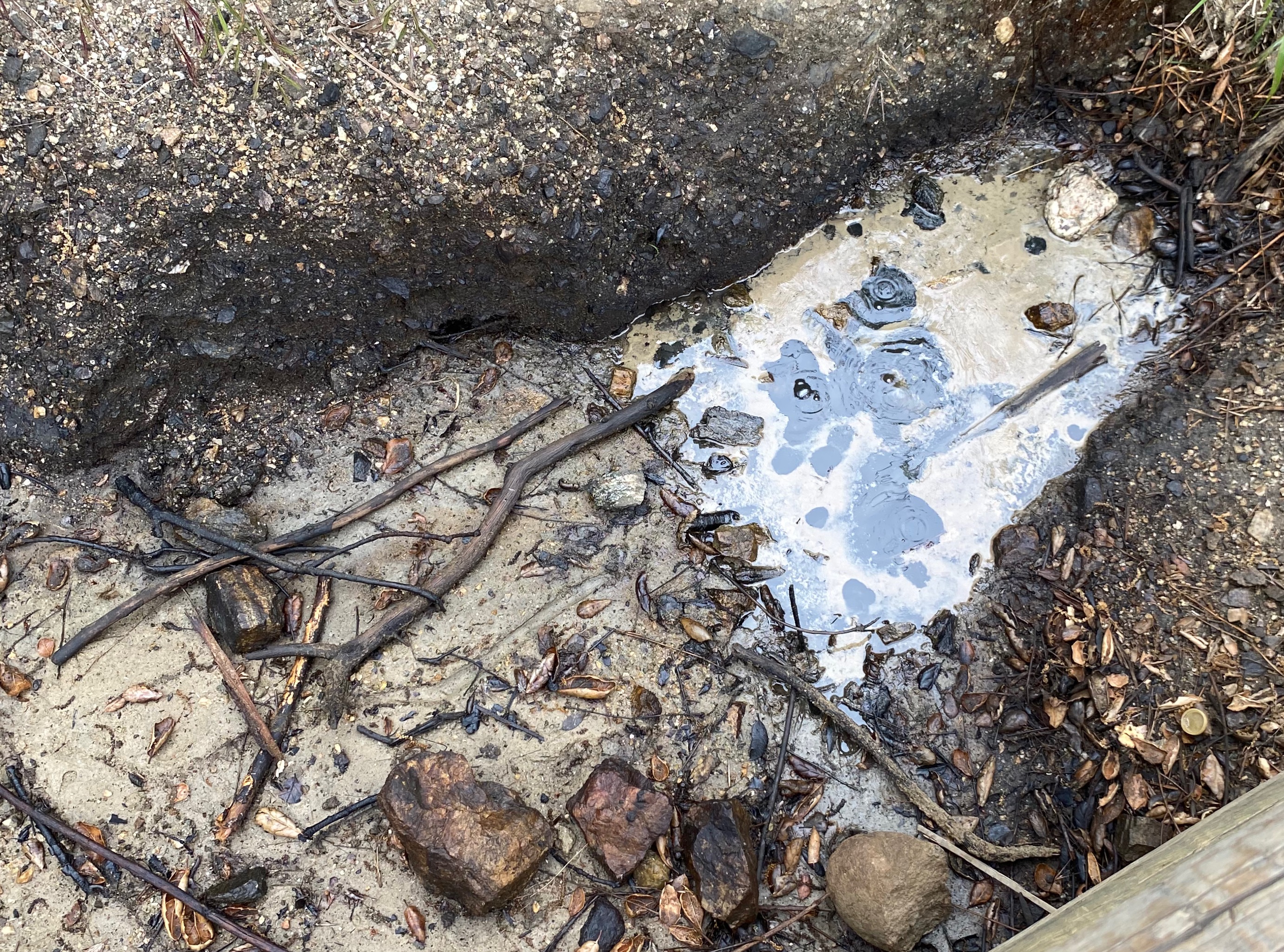
Anthropogenic Impacts
While it was a pristine natural space, there were numerous man-made improvements.
Most significant were trail rails that seemed to exist to slow downhill traffic and function as break checks for cyclists. I say this as the post and rail fences sat as diagonals to one another across the trail, seemingly in locations that would be prone to fast downhill speeds.
Another trail feature was LA County trail markers every few hundred feet. I must admit, I liked these as they were good indicators of where to go, which way to look for an invisible trail, or just confirm I was in the right place. In some places, these trail signs told you how far you had traveled from the start (and how far to the end) at quarter-mile intervals. This was particularly nice on the way back to encourage a weary hiker. While they were a good waypoint, they stood in stark contrast to the otherwise natural setting.
The last bit of artificial/human incursion I observed was the creek crossings. As an organic thing, using rocks and fallen branches to make slippery bridges is good and there were plenty of these throughout. In one location along the Placerita Canyon trail, some clever hiker used a road crew sign horse making for a giant unnatural (and slippery) footbridge. Yes, I was glad to keep my feet dry when moving over the terrain, but disappointed to have to do it with a giant piece of plastic that spanned a third of the creek.

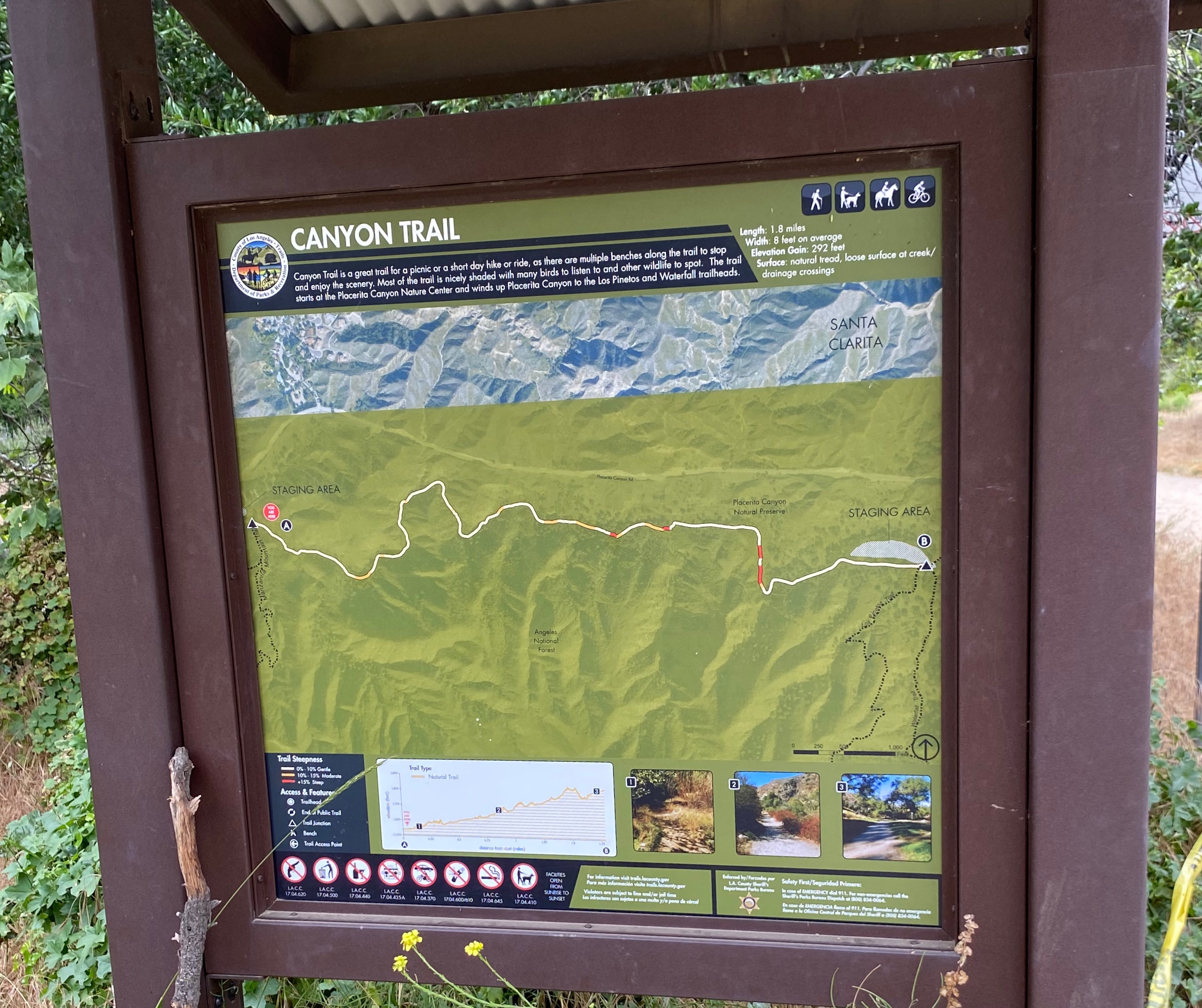
In the Back Canyon
Reaching the staging area in the back of the Placerita Canyon trail, I made a short run up the Waterfall Trail to observe the falls and habitats in the narrower space. Like the trail leading to it, the Waterfall trail had some early elevation gains with hand-hewn steps and slick rock faces, all surrounded by large grows of poison oak, toyon, and what looked like vining grape. There were lots of birds in the tighter canyon and below, chaparral yucca and beautiful purple grass and tree tobacco, all within a short distance from one another.
I did spot some lovely silverpuffs and soap plants in the back of the Placerita Canyon trail as well as clumps of clarkia and dodder. Maltese Thistle was there, too.
Eventually, the slick climbs from trail to trail tore my pants, so I opted to run around and head back to the start. The tear occurred in a year-old pair of Carhartt canvas pants that seemed sturdy enough for the butt to slide down the rock face. I mention this for others who climb the Waterfall trail, be warned that with water flowing, it might be most prudent to descend in some locations on your butt to avoid a nasty topple into more hard rock. I didn’t fall but felt my older Keen hikers lose some grip.
Under a still overcast June sky, I headed back down the trail dry crossing all but the last without planting a foot squarely into the water and concluded my outing at Placerita Canyon at about 3 P.M. All tabulated, I really liked this space and felt like its ease and accessibility really made for an excellent opportunity to explore and see the natural world in a lot of different contexts. There being several side trails gives me a reason to come back soon and observe more of what Placerita Canyon in Newhall has to offer.
Field Observations
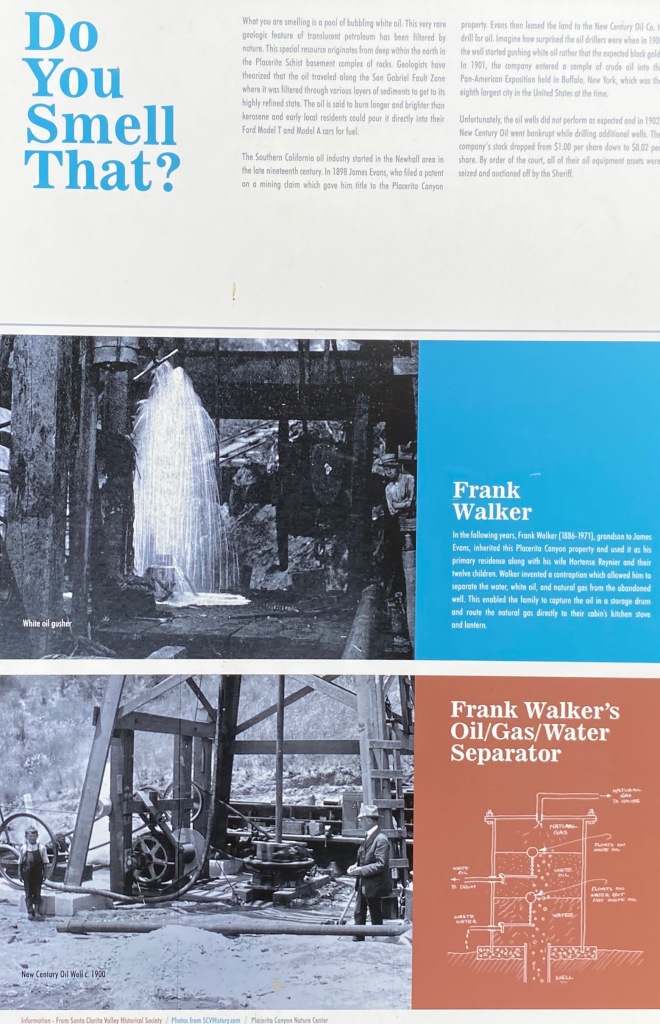
- “White” oil.
- Lots of signage.
- Few hikers.
- No mountain bikers.
- Trail crossing rails.
- Stream crossing using construction materials.
- Lots of visitors around the nature center.
Observed Species
- California Sage – Artemisia californica
- Valley Oak – Quercus lobata
- Coast Live Oaks – Quercus agrifolia
- Black sage – Salvia mellifera
- Mustard (field mustard?) –
- Common wild Oat(?) – Avena fatua
- American Bird’s-foot Trefoil – Acmispon americanus
- Milk Thistle – Silybum marianum
- Maltese Star Thistle – Centaurea melitensis
- Buckwheat – Eriogonum fasciculatum
- Deerweed – Acmispon glaber
- Purple Clarkia – Clarkia purpurea
- Southern Bush Monkeyflower – Diplacus longiflorus
- Acmon Blue – Icaricia acmon
- Western Fence Lizard – Sceloporus occidentalis
- Poison Oak – Toxicodendron diversilobum
- Western Sycamore – Platanus racemose
- Wavy-leafed soap plant – Chlorogalum pomeridianum
- Silverpuffs – Uropappus Uropappus lindleyi
- Rock Phacelia – Phacelia californica
- or could be Mountain Phacelia – Phacelia imbricata ssp. imbricata
- Hairy Ceanothus – Ceanothus oliganthus
- Tree Tobacco – Nicotiana glauca
- California Fuchsia – Epilobium canum
- Mule Fat – Baccharis salicifolia
- Lanceleaf Liveforever – Dudleya lanceolata
- Yerba santa – Eriodictyon californicum
- Blue elderberry – sambucus Mexicana (best guess)
- Wild cucumber – marah macrocarpa
- White sage – Salvia apiana
- Lemonade Berry – Rhus integrifolia
- Miner’s Lettuce – Claytonia perfoliate
- Toyon – Heteromeles arbutifolia
- Sugar Bush – Rhus ovata
- Purple Grass – ?
- Grasses – Several
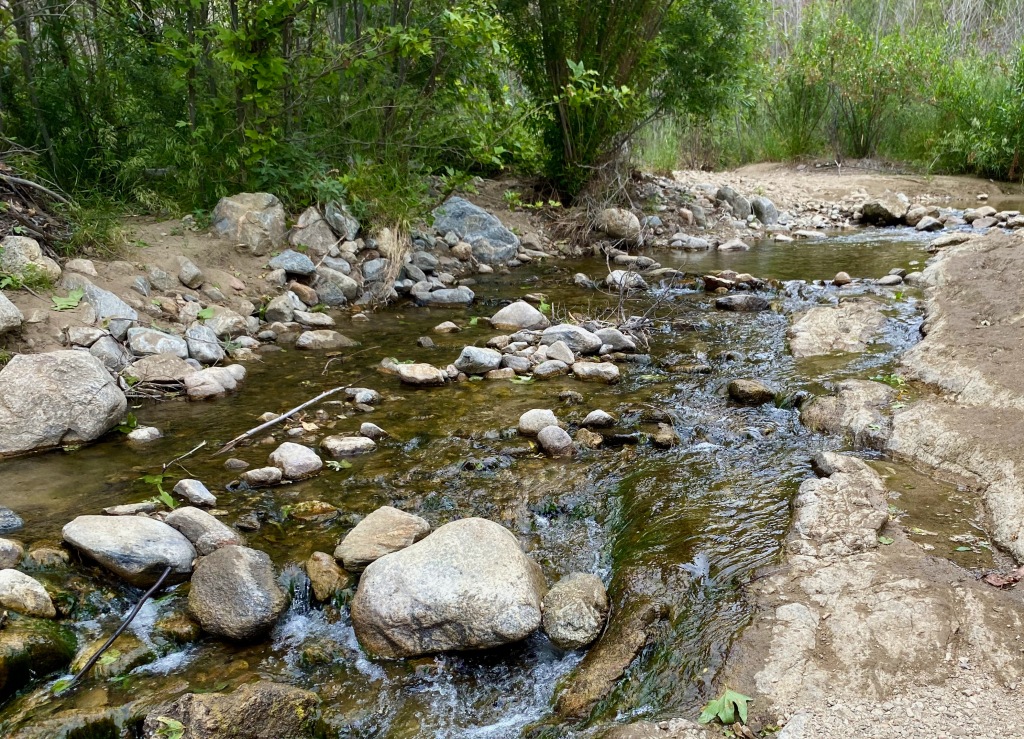
One response to “Observing Placerita Canyon”
[…] can see many of these native plants in the ecosystems where they naturally occur. In particular in Placerita Canyon, the Las Virgenes Open Space and the Santa Monica […]
LikeLike